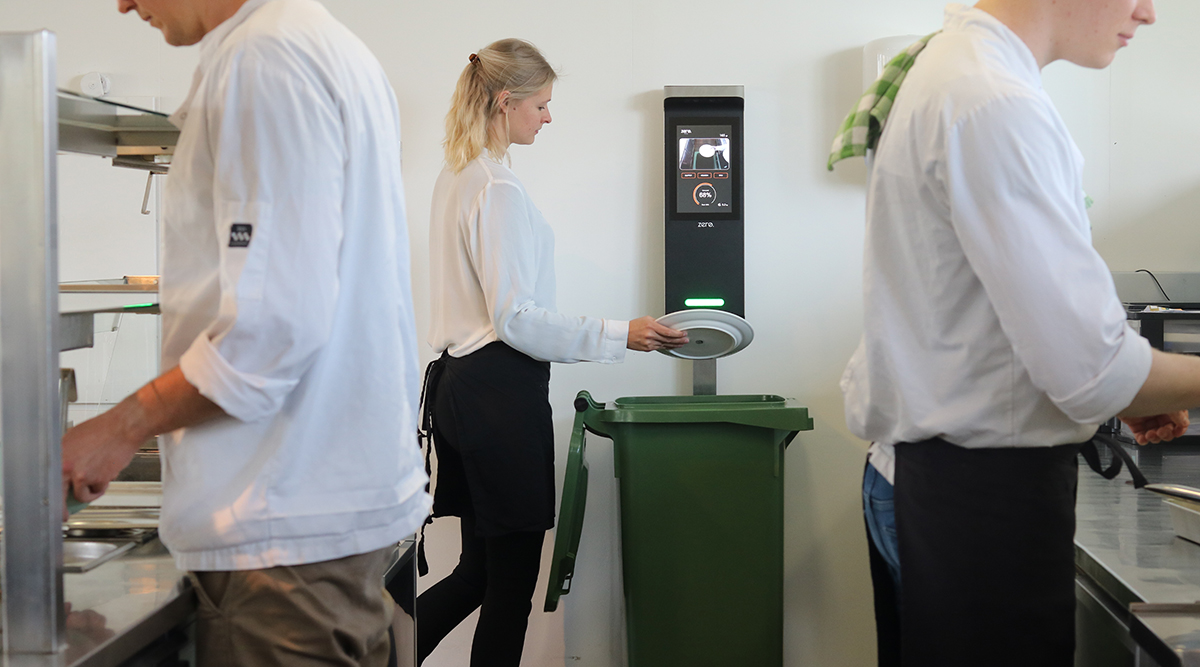AI Helps Restaurants Reduce Waste
How startup Orbisk uses artificial intelligence to help restaurants reduce food waste back of house.
 Restaurant kitchens are notorious generators of food waste—an average of tens of thousands of pounds a year. That fact begged for an innovative solution from Olaf van der Veen and his partners.
Restaurant kitchens are notorious generators of food waste—an average of tens of thousands of pounds a year. That fact begged for an innovative solution from Olaf van der Veen and his partners.
So, in 2019, the trio of digital-tech entrepreneurs founded Orbisk in the Netherlands with one purpose: provide foodservice operators with precise information on what they throw away, and when, and ideas for making reductions.
Orbisk, the app they invented, utilizes AI-powered computer vision to determine the most predominant ingredients wasted in a kitchen and pinpoint when they are wasted, helping cut pre-consumer wastes in typical restaurants by up to 70%, the company claims. The AI is able to assess about a thousand different ingredients as they enter the trash bins, which the company outfits with camera units and scales. Orbisk has been active in European markets for a few years, and now the company is planning to enter the U.S. market.
“It cuts waste and improves profits,” van der Veen says. “The chef or procurement manager can see if there are patterns in the waste, such as a recurring surplus of tomatoes on Tuesday mornings, or a Friday afternoon salad bar that doesn’t work well.”
Orbisk also provides 100 days of training on the system for “how to read the data, what they can find, what we see, how to set goals and commit their team to start producing results,” he says. “The educational part of the service is a very big part of our business.”
The technology can reveal some surprisingly needless sources of waste. For instance, van der Veen says, one restaurant was buying mozzarella balls weekly and wasting a whole bunch of them every Friday.
“We didn’t understand why,” he says. “It turned out that they could only buy the balls from their preferred wholesaler at a particular minimum volume, but they could only use about 500 grams of that volume. So they had to get rid of the rest every weekend. It was a matter of package size that they were able to address with the wholesaler.”
Orbisk charges $6,000–$10,000 a year for a subscription and is working on what van der Veen calls “a lighter solution with less-granular recognition of food” that will be available for as little as $2,000.
“We’re also working on a way to calculate post-consumer waste that restaurants pull off tables after their guests leave,” he says.
Digital Exclusives

10 Food Trend Predictions for 2022
The editors at Food Technology magazine, published by the Institute of Food Technologists (IFT), have announced their predictions for the hottest food trends for 2022.
Food Technology Articles

How to Achieve EPR-Forward Packaging, Part 2
In this two-part series, the author explores the history of Extended Producer Responsibility (EPR), what is needed to help EPR succeed, and how brands can best prepare for EPR.

Taking Your Order
An infographic describing consumers’ dining and ordering preferences at restaurants.

How to Achieve EPR-Forward Packaging
In this two-part series, the author explores the history of Extended Producer Responsibility (EPR), what is needed to help EPR succeed, and how brands can best prepare for EPR.

Future Food-Tech 2024 Tackles Transformation, Underscores Collaboration
Mission-driven Future Food-Tech exhibitors and conference presenters showcased innovative, transformative ingredients and technologies and emphasized the importance of collaboration in addressing food system challenges.

Whipping Up a Bright New Idea
A profile of whipped cream category innovator Whipnotic.
Recent Brain Food

Supporting Sustainable Innovation
Health, welfare, and sustainability concerns have spurred consumers to explore plant-based alternatives. In this sponsored content interview, global ingredients company ofi discusses the forces driving this growing trend, and how it supports product innovation in this emerging category.
IFT Science and Policy Team Forecasts Six Trends for 2023
From a processed foods comeback to breaking food system silos and addressing food and nutrition security, our science and policy experts identify top science of food trends.
ICYMI: Our Most-Popular Business FIRST Conversations Available Online
Tune in to the IFT FIRST on-demand content channel and hear from experts and innovators who are making big impacts.
IFT Scientists' Top 5 Food Trends to Consider in 2022
What's on the horizon for the global food system in 2022? IFT’s Science and Policy Initiatives team gives their predictions on five trends that are expected to take shape in the new year.
New Program Highlights Untapped Potential of Using Food Science for Relief and Development Initiatives
The new field of Food Science for Relief and Development (FSRD) offers a fresh, high-impact approach to tackling problems of global food security, poverty, and malnutrition.
